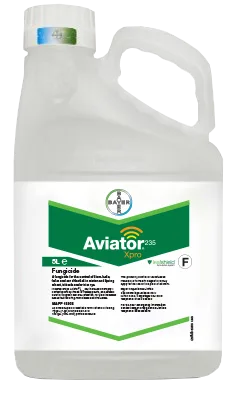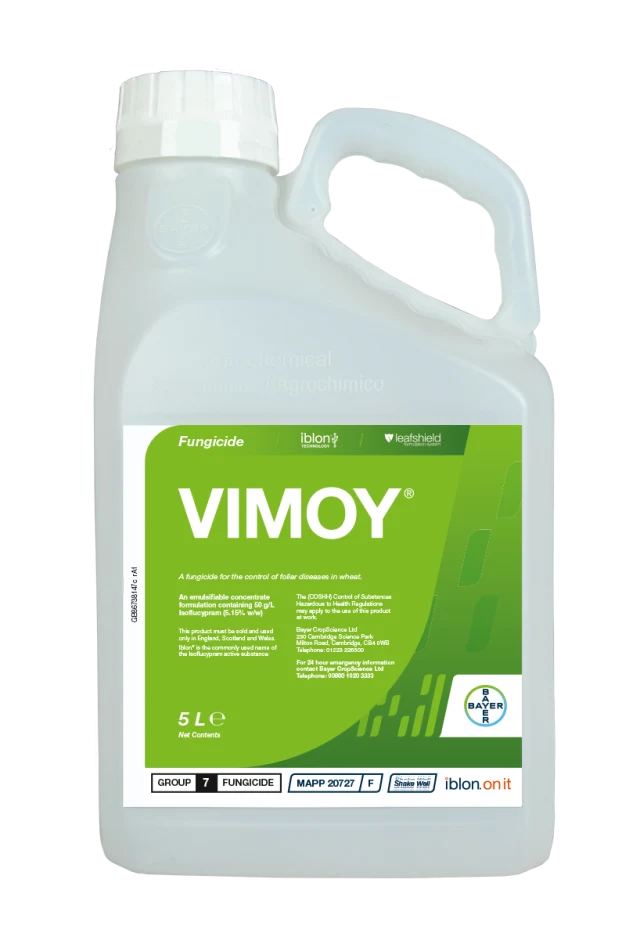Published on 28th March 2025
Local Insights
Disease control advice for wheat and barley crops in East Anglia

Current situation (17 March 2025)
Field work started in earnest in March, with lots of fertiliser and herbicide applications, plus spring crop drilling. The weather was on our side for once with enough moisture and sunlight to keep plants growing, and some frosts to make the ground hard enough to travel.
It’s been particularly good conditions for early herbicide applications and I would hope that all that have needed to be applied will have been by the end of March.
Monitor wheat crops carefully for disease levels
As this is written we haven’t seen too much brown rust, but given last year’s epidemic and potential for inoculum this year, alongside some varieties with only moderate at best resistance it is one to keep monitoring for – hopefully any infections can be taken care of with a T0 spray, along with yellow rust.
At T1 Septoria and eyespot are likely to be key diseases to monitor for – again there are a lot of varieties that struggle with eyespot, and ideally you want to treat preventatively rather than start seeing it on stems in the field.
Later drilled varieties, of which there are probably a greater number than usual this season, will have increased risk of yellow rust, while lowering risks from Septoria and eyespot generally.
For best control of foliar diseases, the aim is to protect the whole of leaf three without leaving it exposed unprotected for too long allowing disease infections to take hold. Last year this was quite tricky to achieve with crops at different growth stages in the same field.
It’s important to monitor for that situation ahead of time – if you see crops are variable in growth stages, it might be possible to tweak T0s into something a little stronger to give a little more protective activity, or you may need to consider a T1.5 if it is particularly uneven. Generally, though if you are using good chemistry at T1 it should be strong enough to see you through to flag leaf.
Typically you should be looking for a fungicide that will protect against a wide range of diseases at this timing, which is what you get with Ascra® Xpro®. That provides Septoria, rust, eyespot control and a bit of mildewicide activity.
If you’re wanting to move into some of the more premium chemistry because of concerns about Septoria and rust pressure, all of the Iblon® range are options. This includes Vimoy® plus a partner or Plaxium®.
In all these options there is a strong SDHI elements with bixafen and fluopyram in Ascra® Xpro® and isoflucypram in the Iblon® products, which bring a lot of additional greening benefits. These can help with improved rooting, useful for crops that have struggled over winter, and improved stem strength.
Prevent tiller abortion in winter barley
There is some variety in drilling dates in winter barley, although quality of seedbed is making more of a difference in how crops look. Regardless of the condition of the barley crop, it’s important to maximise the number of viable tillers at T1 timing. Once we’re past this period the number of tillers we have left and the number of ears produced sets the yield ceiling.
Disease infections around this time can cause the plant to abort tillers, so protecting with a broad spectrum fungicide will help with tiller retention.
Our choice would be to apply Ascra® Xpro®, which will give good control of diseases like net blotch, Rhynchosporium and rusts, and also give physiological benefits to boost the crops yield ceiling.
If you’re quite happy with how forward the crop is and want to spend a little less, then Siltra® Xpro® is also a good option. This could also be a possibility if you want to save your one application of Ascra® Xpro® until T2.
Sugar beet herbicide timing advice
The number of growers using the Conviso® Smart system for sugar beet continues to grow each year, which is encouraging to see.
Timing of the Conviso® One herbicide is usually assessed by targeting an indicator weed at a specific growth stage, for example, fat hen at four true leaves. But if you have a small population of weeds that are growing rapidly and might be getting big by the time the majority have reached the correct timing, it can be useful to apply a conventional herbicide to hold weeds back, before applying Conviso® One.
We have also added some tank mixing partners for Conviso® One on the label, but in most situations, I think sequencing is more effective. Both options could also be helpful where you’re concerned about ALS resistance in certain weeds, given that Conviso® One contains this mode of action. Weeds such as poppies, mayweed and chickweed in particular should be closely monitored.
Sequences will also help with grassweed control, where we know there are wider spread issues with ALS resistance.
Look out for new insecticide option
We’ve received authorisation for a new insecticide, Sivanto® Prime, which contains flupyradifurone. This will be a useful option for sugar beet growers as it controls aphids that may transmit virus yellows.
We think it is best used as the first spray in a programme against Myzus persicae, while the plant is smaller. It has knockdown activity and some translaminar mobility which helps the active ingredient move to the underside of leaves where aphids are often found.
As part of good resistance management, if required, it should then by followed up by a product with an alternative mode of action, such as Teppeki®.
Rothamsted forecasts aphids will only begin to fly in May, so hopefully that proves true. Two application timing label restrictions to be aware of with Sivanto® Prime – one perhaps more relevant for sugar beet growers than the other. The more relevant one is the latest growth stage is nine true leaves, while the latest date for applications is 13 July.
Sivanto® Prime can also be used in potatoes, plus beans, peas and carrots.
Weed control in potatoes
Potato growers have started destoning and ridging up fields ahead of planting, with that likely to have started by the time you read this.
Weed control is typically more effective in potatoes with the help of a good pre-emergence. Make sure you know the sensitivity and market acceptance of the varieties you’re growing to actives, such as metribuzin, as that will obviously play a role in product choice.
Emerger® has emerged – forgive the pun – as a very useful option as part of programmes. Mixed with products such as Artist® it provides good control of broadleaf weeds such as small nettle and fat hen to go alongside the grassweed strength of Artist®.
Critically, Emerger® must be applied at least seven to 10 days before potato crop emergence. Make sure the sprayer is in good condition before applying – clean filters and maintain continuous agitation while mixing.
Monitor for oilseed rape flowering diseases
By April hopefully oilseed rape crops will have recovered from the pigeon damage. Light leaf spot will remain a threat along with Sclerotinia if there are suitable conditions for infection.
Use of Aviator® Xpro® with bixafen and prothioconazole provides dual modes of action against both diseases. Most flowering crops will benefit from at least one protective application of Aviator® Xpro® at 0.75 L/ha, with the possibility of second spray if flowering is prolonged.
---
Ascra® Xpro® contains bixafen, fluopyram and prothioconazole. Aviator® contains bixafen and prothioconazole. Artist® contains flufenacet and metribuzin. Conviso® One containsforamsulfuron and thiencarbazone-methyl. Emerger® contains aclonifen. Plaxium® contains isoflucypram, fluopyram and prothioconazole. Siltra® Xpro® contains bixafen and prothioconazole. Sivanto® Prime contains flupyradifurone. Teppeki® contains flonicamid. Vimoy® contains isoflucypram.
Ascra®, Aviator®, Artist®, Conviso®, Emerger®, Iblon®, Plaxium®, Siltra®, Sivanto®, Vimoy® and Xpro® are registered Trademarks of Bayer. All other brand names used are Trademarks of other manufacturers in which proprietary rights may exist. Use plant protection products safely. Always read the label and product information before use. Pay attention to the risk indications and follow the safety precautions on the label. For further information, including contact details, visit www.cropscience.bayer.co.uk or call 0808 1969522. © Bayer CropScience Limited 2025










